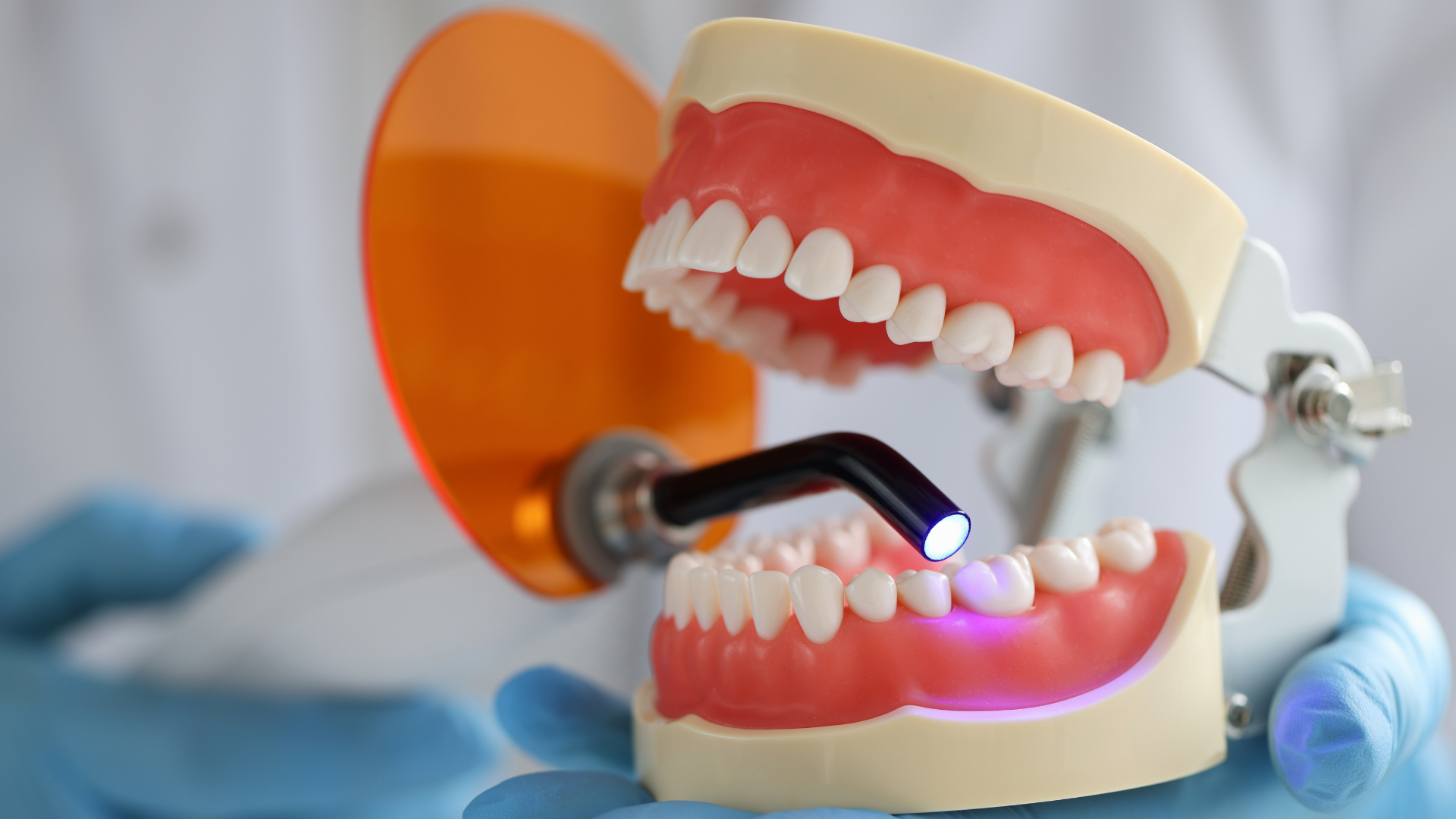The Ultimate Perfect Dental Fillings in San Diego: Tips, Cost, and FAQs- May 2023
Introduction:
Dental fillings have been around for centuries, with evidence of ancient civilizations using various materials such as beeswax, resin, and even gold to fill cavities in teeth. However, it wasn't until the 1800s that modern dental fillings began to emerge. At the time, dentists were using a combination of metals, including lead, tin, and silver, to fill cavities. Unfortunately, these materials were not durable and could cause health issues for patients.
As dental technology advanced, so did the techniques and equipment used for dental fillings. In the early 1900s, a new type of dental filling material emerged - amalgam. This material, which is a combination of metals including mercury, silver, and tin, was more durable and could withstand the wear and tear of chewing. Today, amalgam fillings are still used, but many dentists have switched to more modern materials like composite resin and ceramic.
According to the American Dental Association, dental fillings are one of the most common dental procedures performed in the United States. In fact, over 90% of adults have had at least one dental filling in their lifetime. However, statistics vary in other countries due to differences in dental care access and education.
The modern-day dental filling process typically involves removing the decayed portion of the tooth and filling the cavity with a dental filling material. The most common materials used for dental fillings today are composite resin and ceramic, which are tooth-colored and blend in with the surrounding teeth. Other less common materials include gold and amalgam.
Overall,
dental fillings
have come a long way since their early beginnings, and modern materials and techniques allow for more effective and aesthetically pleasing results. With proper care and regular dental check-ups, dental fillings can help maintain the health and function of teeth for years to come.

Types of Dental Fillings
When it comes to dental fillings , there are several materials to choose from, each with its own benefits , risks, and costs. Here are the most common types of dental fillings:
Amalgam Fillings:
- Benefits: Amalgam fillings are durable, long-lasting, and cost-effective compared to other filling materials. They are also known for their strength and resistance to wear and tear, making them a good option for back teeth that do most of the chewing.
- Risks: Amalgam fillings are made of a combination of metals, including mercury, which can be a concern for some patients. While the amount of mercury in amalgam fillings is very small, some people may experience an allergic reaction or have concerns about the potential health risks.
- Cost: Amalgam fillings are generally the most affordable option, with a cost range of $50-$200 per filling, depending on the location and complexity of the procedure.
Composite Fillings:
- Benefits: Composite fillings are tooth-colored and blend in with the surrounding teeth, making them a popular option for front teeth and visible areas of the mouth. They are also less invasive than amalgam fillings, as less tooth structure needs to be removed to place them.
- Risks: Composite fillings are not as durable as amalgam fillings and may need to be replaced sooner. They can also be more prone to chipping or breaking.
- Cost: Composite fillings are more expensive than amalgam fillings, with a cost range of $100-$500 per filling, depending on the location and complexity of the procedure.
Ceramic Fillings:
- Benefits: Ceramic fillings, also known as porcelain fillings, are tooth-colored and blend in with the surrounding teeth. They are also highly durable and long-lasting, making them a good option for back teeth that do most of the chewing.
- Risks: Ceramic fillings can be more expensive than other filling materials, and they require a skilled dentist to place them correctly.
- Cost: Ceramic fillings are generally the most expensive option, with a cost range of $500-$2,500 per filling, depending on the location and complexity of the procedure.
Gold Fillings:
- Benefits: Gold fillings are highly durable and long-lasting, and they require less tooth structure to be removed than other filling materials. They are also less likely to cause tooth sensitivity or other issues.
- Risks: Gold fillings are not tooth-colored and may not be aesthetically pleasing to some patients. They are also more expensive than other filling materials.
- Cost: Gold fillings are generally the most expensive option, with a cost range of $500-$2,500 per filling, depending on the location and complexity of the procedure.
Overall, the type of filling material chosen will depend on several factors, including the location of the filling, the patient's preferences and concerns, and the dentist's recommendation. It is important to discuss these options with your dentist to determine the best course of action for your individual needs.
The cost of a dental filling can vary based on several factors
Here are the main factors that affect the cost of dental fillings:
Location of the dental clinic:
The cost of dental fillings can vary based on the location of the dental clinic. For example, dental clinics in metropolitan areas may have higher overhead costs, which can translate to higher prices for dental procedures.
Complexity of the procedure:
The complexity of the dental filling procedure can also affect the cost. For example, if the cavity is larger or the decay is deeper, the procedure may be more complicated and require more time and materials, which can increase the cost of the filling.
Type of filling material:
The type of filling material used can also affect the cost. As mentioned earlier, amalgam fillings are generally the most affordable, while ceramic and gold fillings can be much more expensive.
Insurance coverage:
Insurance coverage can also play a role in the cost of dental fillings. Some insurance plans may cover the entire cost of the filling, while others may only cover a portion. It is important to check with your insurance provider to understand what is covered under your plan.
It is important to note that the cost of dental fillings can vary widely based on these factors. It is recommended to get an estimate from your dentist before the procedure so you can budget accordingly. Additionally, many dental clinics offer financing options or payment plans to help make dental procedures more affordable.
How to Prepare for a Dental Filling Procedure
Preparing for a dental filling procedure can help ensure a successful outcome and a comfortable experience. Here are some tips for preparing for a dental filling procedure:Pre-Procedure Instructions:
- Notify your dentist of any health issues or medication you are taking.
- Avoid eating or drinking anything for at least six hours before the procedure if general anesthesia will be used.
- Plan for transportation if you will be receiving sedation for the procedure.
- Wear comfortable clothing and avoid wearing any jewelry or accessories that could interfere with the procedure.
What to Expect During the Procedure:
- Your dentist will begin by administering a local anesthetic to numb the area around the affected tooth.
- Once the area is numb, the dentist will remove the decayed portion of the tooth using a dental drill.
- The tooth will then be cleaned and prepared for the filling material.
- The filling material will be placed in the cavity and shaped to match the surrounding teeth.
- The filling will be cured with a special light to harden the material and bond it to the tooth.
- Your dentist will polish the filling and adjust the bite to ensure proper alignment.
Post-Procedure Care:
- Avoid eating or drinking anything hot or cold for a few hours after the procedure.
- It is normal to experience some sensitivity or discomfort after the procedure, but this should subside within a few days.
- Use a soft-bristled toothbrush and avoid brushing the filling directly for a few days
- Avoid chewing on hard or sticky foods for the first 24 hours.
- Attend all follow-up appointments to ensure the filling is secure and functioning properly.
- It is important to follow all post-procedure instructions provided by your dentist to ensure a successful outcome and minimize any discomfort or complications.
If you experience any severe pain, swelling, or other issues after the procedure, it is important to contact your dentist immediately.
Describe the best methods to prevent dental decay and the need for dental fillings.
- Brushing and flossing: Regular brushing and flossing can help remove plaque and bacteria from the teeth, which can prevent decay from forming. It is recommended to brush at least twice a day for two minutes each time and floss once a day.
- Fluoride treatments: Fluoride can help strengthen tooth enamel and prevent decay. Fluoride treatments are available at dental clinics and can be applied as a gel, foam, or varnish.
- Dental sealants: Dental sealants are a protective coating applied to the surfaces of the teeth, typically the back teeth, to prevent decay from forming in the grooves and crevices.
- Healthy diet: A healthy diet that is low in sugar and processed foods can help prevent decay by reducing the amount of bacteria and acid in the mouth.
-
Regular dental check-ups:
Regular dental check-ups can help detect any signs of decay or damage early on, allowing for prompt treatment and prevention of further decay.
In other continents, there may be additional methods used to prevent dental decay.
For example:- In Asia, herbal remedies and traditional medicine are often used to promote oral health.
- In Africa, chewing on fibrous foods like sugar cane or gum from trees can help clean teeth and prevent decay.
- Additionally, in many parts of the world, water fluoridation is used to prevent decay on a community-wide level.
The best methods to prevent dental decay and the need for dental fillings includes:
- Regular brushing and flossing,
- Fluoride treatments,
- Dental sealants,
- A healthy diet,
- Regular dental check-ups.
By incorporating these methods into your oral hygiene routine, you can help prevent decay and maintain good oral health for years to come.
Common Questions and Answers about dental fillings
Conclusion
Dental fillings play a crucial role in maintaining the health and function of teeth. They help to restore teeth damaged by decay or trauma and prevent further deterioration. With advances in dental technology, there are several types of filling materials available, each with its own benefits, risks, and costs.
Regular dental check-ups and proper oral hygiene are also essential for maintaining good dental health. Dental fillings can last for many years, but they do require proper care and regular maintenance to ensure they remain secure and functional.
In conclusion, dental fillings are a valuable treatment option for maintaining healthy teeth and preventing further damage. If you suspect you may need a dental filling or have any concerns about your dental health, it is important to schedule an appointment with your dentist as soon as possible. Remember to attend regular dental check-ups and practice good oral hygiene habits to ensure your teeth and dental fillings remain healthy for years to come.
The office of Dr. James Spalenka, DDS.
A Gentle, Comfortable Dental Experience, Offering Skill & Modern Technology
HIGH-TECH EQUIPMENT | CARING STAFF | MODERN OFFICE



